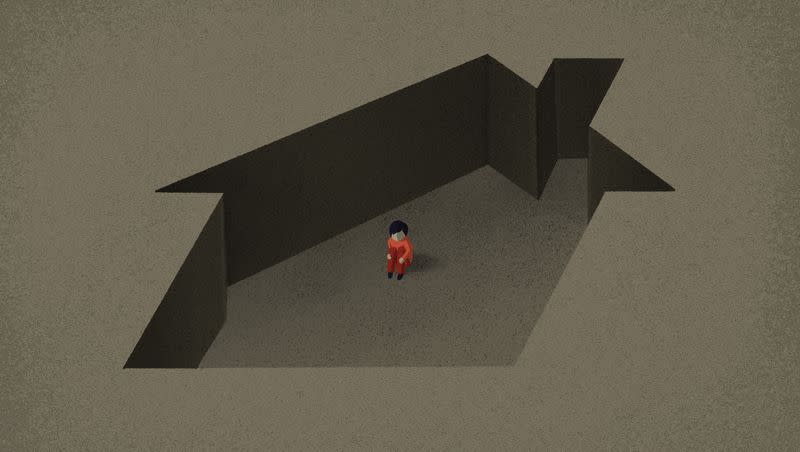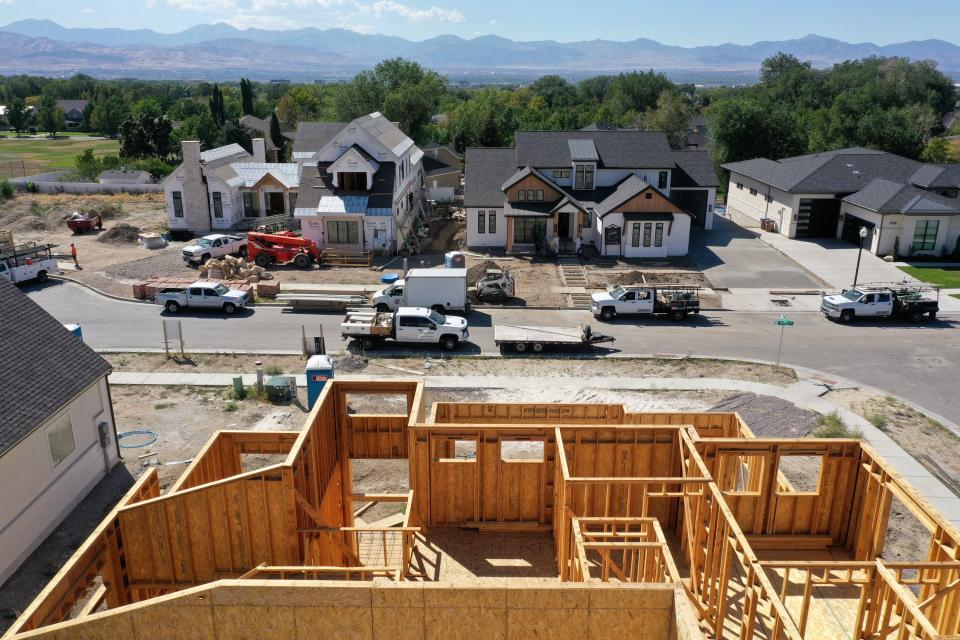Opinion: Are we in a housing crisis? Just look at the carpenter index

These days, just about anywhere along the Wasatch Front you can find workers building houses, pounding nails into wood-framed structures, installing sheet rock or putting finishing touches on homes designed to serve families for years.
But do these skilled carpenters earn enough money to afford the homes they are building?
Unfortunately, the answer is no in most metropolitan areas. It’s an emphatic no in Utah, especially along the Wasatch Front, where average home prices have outstripped the average wage of a carpenter by a long shot.

The American Enterprise Institute publishes an annual carpenter’s index that illustrates this point. It may be the most accurate and stark way to view the nation’s housing crisis, in which more and more Americans are being priced out of homes, either to rent or to buy.
The index begins with an average carpenter wage of $51,000, then assumes a household income of 150% of that, or $77,000. Given the generally acceptable lending rule that someone could afford a home worth three times his or her household income, a carpenter could afford a home worth up to $231,000.
Using this metric, the AEI website says, “one can go on any real estate website and search for homes listed at three times the carpenter household’s income, which of course varies by metro. The results are telling.”
Indeed they are.
The average carpenter in Salt Lake City, with an income of $78,000, could afford only 15.6% of a starter home, according to the 2022 report. In Provo, the figure was 8.9%, one of the worst in the nation. The report says “Provo is the least affordable metro in the Mountain West.” Los Angeles was the worst in the coastal West at 4%.
AEI says it publishes this index as a proxy for an average blue-collar worker’s chances of affording a starter home. It “provides answers to some of the most challenging questions facing first-time homebuyers by comparing housing affordability across the nation.”
To illustrate the current crisis, in 2012, the index found only seven of the nation’s top 100 metro areas in which carpenters could not afford such a home. In 2022, it found 59.
Adding to this data, a recent report from the Federal Reserve Bank of Atlanta concluded that houses today are less affordable than they were during the peak of the housing bubble in 2006, which precipitated the Great Recession in 2008.
Related
Housing affordability is now worse than before 2006 bubble popped. Where does Utah stand?
U.S. home prices are rebounding — almost all the way back to record highs last year
Many experts believe the nation is not headed for a repeat of the housing bust that once threatened to collapse the economy. But that doesn’t help if you’re looking for your first house, or for a decent place to rent, and you can’t afford either.
The nation must find ways to attack this housing crisis, which is making it difficult for many to obtain the dignity associated with their own space. One traditional definition of the American dream has been home ownership. This is becoming elusive, which affects a person’s ability to obtain employment, transportation and other markers of success. Ultimately, housing difficulties lead to homelessness among the most vulnerable people.
The clear answer to this crisis is to build more housing, and to allow more high-density housing where appropriate. That means more generous zoning, and a loosening of rules concerning accessory dwelling units, or rentals within existing homes.
Even with these measures, rising interest rates are exacerbating this problem. High rates on new mortgages incentivize people to hang onto homes they otherwise might sell, which would add to the stock of available housing.
A recent report by Politico noted there is a nationwide housing shortage, which keeps pressuring prices upward. In 2022, median rent rose beyond $2,000 per month nationwide for the first time, and nearly half of renters found themselves spending more than 30% of their monthly wages on rent alone.
Before interest rates rose, housing prices jumped by more than 10% nationwide between 2021 and 2022. In many Utah cities, it was worse. Even with a slight decrease in home prices this year, the typical home today in Salt Lake City costs $539,997, according to Zillow.
Utah was on the road to easing its housing shortage before interest rates rose. According to the Census Bureau, Utah led the nation in the growth of housing units between July 1, 2021, and July 1, 2022, with an increase of 3.3%. Now, that progress is threatened.
These problems are not likely to go away until those rates, along with inflation, begin to fall once more.
Other reports draw attention to this problem. The Federal Reserve Bank of Atlanta estimates a person earning the median national income ($76,072), would need to spend 43% of his or her income to afford a median priced home. Experts recommend spending no more than 30%.
But the carpenter’s index is powerful in that it illustrates how a segment of American society — the blue-collar workers people rely on for modern lifestyles, convenience and dignity — are denied the very things they provide for others.
Zillow just released a report showing an estimate that home prices will rise nationwide by 6.5% between now and next July. The Ogden-Clearfield and Logan areas are predicted to rise by more than 7%, while the report predicts Provo-Orem home prices will climb by 5.8%, and Salt Lake City will rise by 6.4%.
A Politico report recommends the nation begin measuring how many people are forced to leave a home each year through evictions or foreclosures. You can’t fix a problem you haven’t measured.
That would indeed be helpful, as would increasing the housing stock and eventually lowering interest rates. America’s housing crisis deserves all the energy and attention bright minds can muster. We owe that to the rising generation, and to all those carpenters who expertly build homes they, themselves, cannot afford.

